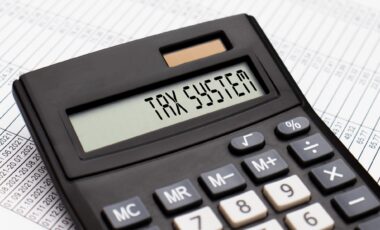The Australian Taxation Office (ATO) has issued a timely warning to millions of taxpayers ahead of the 2023-24 tax filing season. The ATO has urged Australians who use their cars for work-related purposes to be cautious when claiming car tax deductions, particularly the “cents per kilometre method”, which is one of the most common, yet misunderstood, ways to claim these expenses.
While the cents per kilometre method may seem straightforward, the ATO is alerting taxpayers that claiming the maximum allowable amount without the necessary records can result in scrutiny or even an audit. Understanding the correct procedures and keeping adequate documentation is essential to avoid falling into this trap.
The ATO’s Warning on Car Tax Deductions
For Australians who use their cars for work, the ATO offers two primary methods for claiming a deduction: the cents per kilometre method and the logbook method. The cents per kilometre method allows taxpayers to claim up to $4,400 for business-related travel, covering up to 5,000 kilometres at 88 cents per kilometre. However, this approach requires individuals to substantiate their claims by proving they own the car, use it for work-related purposes, and have a clear calculation of their work-related kilometres.
ATO spokespersons emphasized that taxpayers cannot simply claim the maximum deduction of $4,400 without properly recording their work-related travel. To comply with ATO regulations, individuals must document how they calculated their work kilometres, using tools such as a diary or the myDeductions feature in the ATO app. Without these records, the ATO may challenge the claims during audits.
Common Mistakes With The “Cents Per Kilometre Method”
One of the most prevalent mistakes that taxpayers make is assuming they can automatically claim the full $4,400 deduction without the appropriate documentation. This misconception can lead to costly consequences if the ATO conducts an audit. According to Belinda Raso, the director of Tax Invest Accounting, many individuals fail to realize the importance of tracking and documenting their work-related travel.
“You’ve got people who just go and automatically claim the 5,000 kilometers,” Raso explained. “On the other hand, there are also people who don’t realize when they can actually claim it.”
The cents per kilometre method offers a simplified approach to claiming car expenses, but the logbook method, which involves more detailed tracking of work-related journeys, may be necessary for some taxpayers to ensure they are following the rules. Either way, maintaining records is a key part of staying compliant with the ATO’s regulations.
ATO warning for millions over common $4,400 car tax deduction mistake: 'Explain' https://t.co/MEHBd8ygEv
— Yahoo Finance Australia (@YahooFinanceAU) July 9, 2025
Car-related Travel is a Significant Part of Tax Returns
Car-related expenses are among the most commonly claimed deductions, with 3.6 million Australians expected to file for such claims in the 2023-24 tax year. The total value of these filings is projected to reach $10.3 billion. Given the high volume of claims, the ATO has made it clear that it scrutinizes car-related deductions more closely than others, particularly when individuals claim the full $4,400 using the cents per kilometre method.
Despite the absence of a formal logbook requirement, the ATO maintains that adequate proof is essential to substantiate any claims made. If taxpayers cannot provide sufficient records during an audit, they risk having their claims denied or face penalties.
How to Avoid The Tax Deduction Mistake
To avoid making the same mistake, taxpayers must ensure that they only claim the cents per kilometre method if they can provide evidence to support their claim. Recording work-related travel using a diary, journal, or the myDeductions tool in the ATO app can help taxpayers substantiate their claims and avoid the possibility of an audit.
For those who choose the logbook method, additional records are necessary. This method may involve more effort, but it offers a more comprehensive way to track and claim car-related deductions, especially for those who use their vehicle extensively for work purposes.
The Implications of Getting it Wrong
The consequences of improperly claiming a $4,400 deduction can be significant. With tax season in full swing, Australians need to understand that the ATO is vigilant when it comes to car-related claims. Individuals who fail to keep proper records or who claim deductions they are not entitled to may find themselves facing an audit and possibly even penalties.
As more Australians rely on their vehicles for work-related travel, the ATO’s warning serves as a timely reminder to carefully track journeys and maintain accurate documentation. By following the ATO’s guidelines and keeping the required records, people can avoid common mistakes and ensure their claims are both valid and legitimate.









